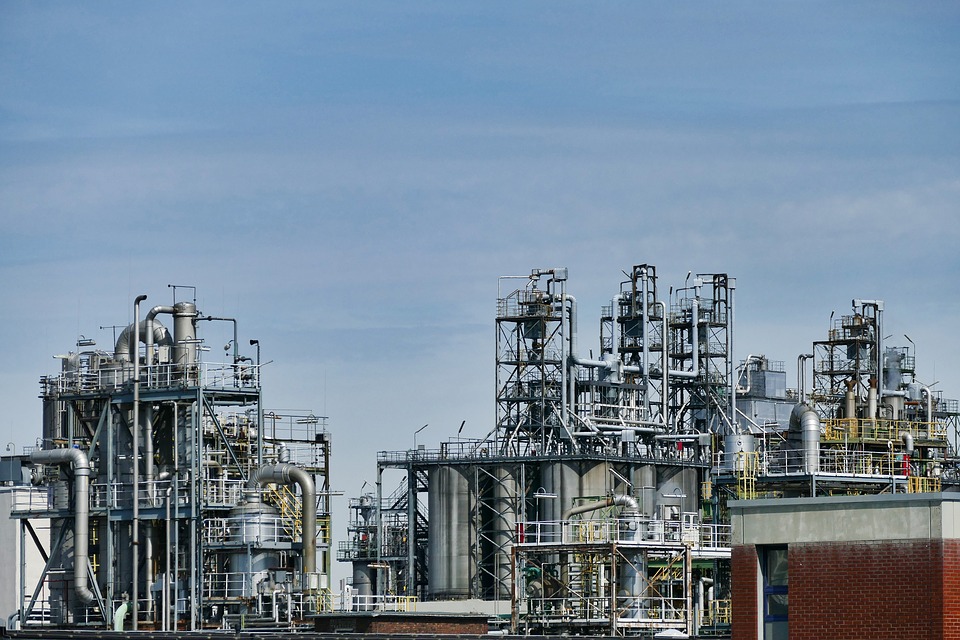The complexity of treatment and desulfurization of oil and it products to remove undesired sulfur compounds is due to the complex composition of the material and a vast variety of sulfuric compounds. Crude oil consists of carbon, hydrogen, sulfur, oxygen and nitrogen. There are small portions of metals, mostly nickel and vanadium. Hydrocarbons are 75% of the total composition of oil. Sulfur is present in all types and sorts of crude, its content varies from 0.3% for sweet crude to 3-8% for sour crude, while the number of various sulfur compounds reaches 250.
The increase extraction of sour crude make desulfurization an ever more important priority. The problems of the conventional preliminary desulfurization process may be due to the selectivity to the sulfur compounds extracted, as well as large amounts of chemicals, including expensive catalysts. Research shows that the effects of hydrodynamic cavitation on crude oil promotes promotes desulfurization. The most promising means of cavitation is the ferromagnetic particle vortex layer device, also known as the AVS.
The technology in development, apart from reducing the amount of undesired impurities, must meet quite a few other requirements for application at oil refineries. Among the main objective of the new technology are minimizing of energy and chemical consumption for thermal and catalytic cracking. Processing of liquid hydrocarbons by cavitation in the AVS vortex layer device shows great promise.
To verify the effect of intensive motion of a large number of ferromagnetic elements on crude oil in the desulfurization process, a series of experiments were performed to reduce the amount of sulfur and organic sulfur compounds. The experiment was performed at 70oC on a laboratory test machine, with a 1 liter processing chamber of nonmagnetic material.
The chamber was filled with a certain amount of ferromagnetic element before the processing, followed by oil. The unit was started, and, after a certain amount of time, the processed oil was drained, settled and separated from the emulsion, which contained sulfur compounds. The separated oil was processed in the machine again.
The quality of the desulfurization process in the AVS was determined by taking processed oil samples every 10 seconds. To identify the optimal process conditions (time), a dependency of content removal rate as function of processing time was found. It was determined, that process duration must not exceed 40 seconds. Longer processing time reduces efficiency of desulfurization.
The results of the test are listed in Table 1.
Table 1 – Experiment results [Kuimov, 2018]
| No |
Parameter |
Process duration, seconds |
||||
|
0 |
10 |
20 |
30 |
40 |
||
| 1 | Sulfur by weight, % |
2,8 |
1,68 |
0,28 |
0,12 |
0,08 |
| 2 | Sulfur by weight, % |
2,8 |
1,64 |
0,31 |
0,09 |
0,05 |
| 3 | Sulfur by weight, % |
2,8 |
1,67 |
0,27 |
0,08 |
0,06 |
| 4 | Sulfur by weight, % |
2,8 |
1,66 |
0,28 |
0,1 |
0,07 |
| 5 | Sulfur by weight, % |
2,8 |
1,65 |
0,31 |
0,07 |
0,05 |
| 6 | Sulfur by weight, % |
2,8 |
1,63 |
0,28 |
0,08 |
0,05 |
| 7 | Sulfur by weight, % |
2,8 |
1,68 |
0,29 |
0,11 |
0,08 |
| 8 | Sulfur by weight, % |
2,8 |
1,69 |
0,27 |
0,08 |
0,04 |
| 9 | Sulfur by weight, % |
2,8 |
1,65 |
0,28 |
0,09 |
0,07 |
| 10 | Sulfur by weight, % |
2,8 |
1,67 |
0,28 |
0,08 |
0,06 |
The following was found in the process of experimental crude oil desulfurization in the AVS device:
- The most efficient processing to reduce sulfur content to 80 ppm in 1 kg of the raw material was achieved with at least 120 microcycles, according to the selected phase connection programs.
- AVS operation, due to the high reactive power and the corresponding low power ratio, will significantly influence the balance of reactive power in the power supply system of the facility.
The range of desulfurization efficiency in the experiments varied from 40 to 97% depending on processing time. In other words, the effect of intensive motion of a large amount of ferromagnetic elements for 40 seconds reduces the content of sulfur and sulfurous compounds in crude oil sample by 97% on average. Longer processing time significantly reduces the efficiency of the process.
The results achieved and dependencies found for the application of AVS can be used in designing liquid hydrocarbon desulfurization facilities.
Considering the above, implementation of the developed crude oil desulfurization method in an electromechanical converter with a discreet secondary component is possible in oil mini-refineries. This environmentally friendly and inexpensive desulfurization method can improve the range and quality of the products. Based on an analysis of mini-refineries, each facility processes 4 to 10 tons of crude. Therefore, the new technology will be designed for a capacity of 8 tons per 24 hours.
The AVS can efficiently process up to 0.15 tons of material per hour. To increase the capacity, multiple AVS modules can be installed consecutively on an oil supply line, and the AVS can be installed in parallel to increase total capacity.
Two consecutively placed AVS systems can process approximately 5 tons of crude oil per 24 hours.
To increase the capacity to 10 tons per 24 hours, two pairs of AVS modules can be installed consecutively.
Therefore, it is estimated that 10 tons per 24 hour capacity requires four AVS units with identical power requirements.
At the same time, when designing an AVS-based crude oil desulfurization system, the low power ratio of these devices must be taken into account. The design should include the added costs of reactive power compensation devices.

